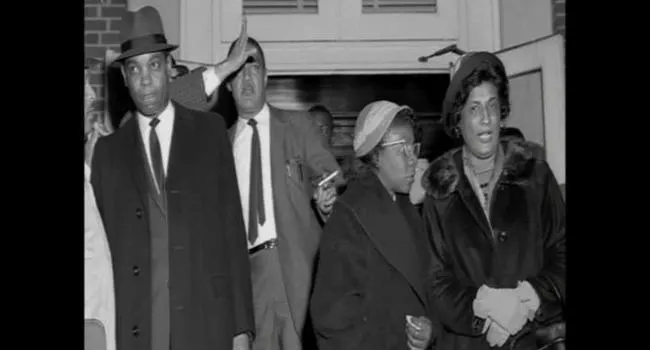In the 1950s and early 1960s, Southern states fought against desegregation, and the last state to comply was South Carolina. In 1963, Harvey Gantt was able to peacefully integrate Clemson College, though his success was not without challenges. This is his story.
Harvey Gantt grew up in the segregated South, a period where schools, and many other government and public buildings were “separate but equal.” Harvey was born in Charleston, and his father worked in the Charleston ship yard, providing a comfortable life for the family. While Christopher and Wilhelmina Gantt protected their children from the full impact of the Jim Crow society, they were well aware that changes needed to be made. The South Carolina NAACP won many civil rights battles, and when a petition for equal educational advantages was denied, this resulted in the lawsuit known as “Briggs vs Elliot,” led by Charleston attorney Thurgood Marshall. “Briggs vs Elliot” became part of the famous “Brown vs Board of Education,” which declared segregation of public schools as unconstitutional. While some state leaders and business people attempted to circumvent the Supreme Court ruling, the NAACP remained vigilant in its fight for state leaders to fall in line with the federal ruling.
Standards
- 5.4.CC Analyze the continuities and changes of race relations in the United States and South Carolina following the Supreme Court decisions of Briggs v. Elliott and Brown v. Board of Education.
- 8.5.CX Analyze the correlation between the Modern Civil Rights Movement in South Carolina and the U.S.
- This indicator was designed to foster inquiry into the role of South Carolina in the Modern Civil Rights Movement, to include the influence of court cases such as Briggs v. Elliot and Flemming v. South Carolina Electric and Gas. This indicator was also developed to promote inquiry into the relationship between national leadership, protests, and events and South Carolina leadership, protests and events, such as the Friendship Nine and the Orangeburg Massacre.
- USHC.5.CC Evaluate continuities and changes during the Civil Rights Movement and other subsequent movements for equal rights.
- This indicator was developed to promote inquiry into thematic continuities and changes into how marginalized groups sought and won legal rights. Inquiry into the leadership, methods, and outcomes of modern equal rights movements are supported by this indicator.
Resources
You need to be logged in to listen to view this content. Create an account now; it's quick, easy, and free!
Log In to View


